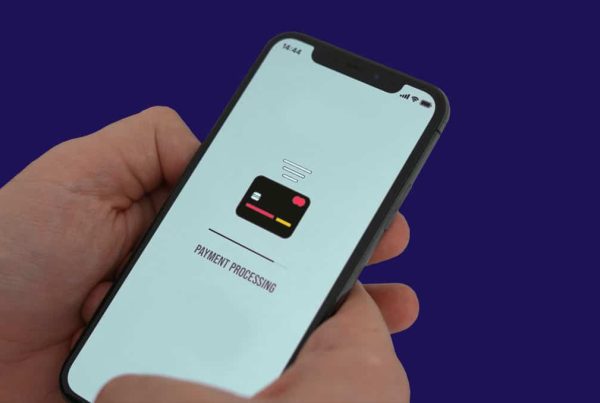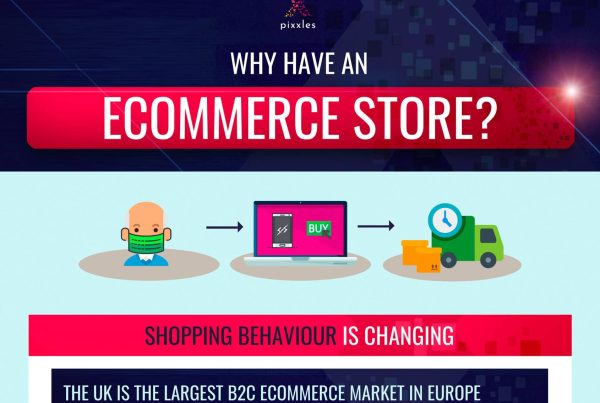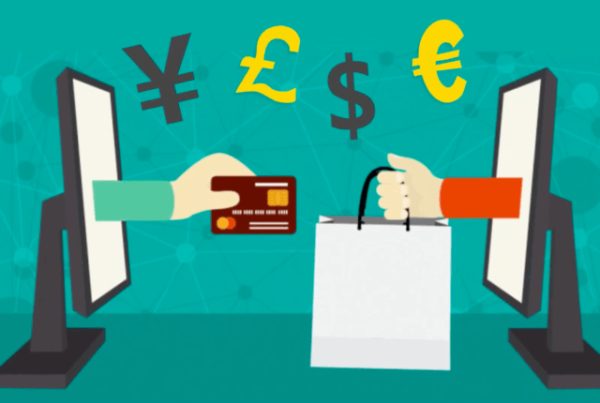What are embedded payments?
In ecommerce, embedded payments are any type of payment that is directly processed within an online platform without requiring users to navigate away to complete their purchase.
Are embedded payments growing in popularity?
Yes, embedded payments are becoming extremely popular. In fact, the integrated network economy (businesses, platforms, or other entities) could represent a massive $60 trillion global revenue pool by 2025, according to McKinsey Digital.
Moreover, PYMNTS states that 72 percent of executives believe their small and medium-sized business customers would be highly interested in an all-in-one platform solution to make B2B payments. 82 percent, meanwhile, indicated that their SMB customers would be interested in such solutions to receive payments.
This 82 percent could presumably encompass various types of payments, not limited to B2B, and might include transactions with customers, payroll, and more.
» MORE: What is an EFT payment? A Guide for Online Merchants
Example of an embedded payment
Did you know Shopify has its own embedded payment service known as Shopify Payments?
This is why, when customers shop at an online store powered by Shopify, they are able to enter their payment details directly into the store without being redirected to an external payment gateway or page.
How do embedded payments work within a website or application?
Embedded payments are quite complex. Here is a brief overview, however, of the process that ecommerce stores follow when accepting embedded payments.
Embedded payments process ⬇️
Secure Data Transmission → Payment details are encrypted and sent to the processor.
Payment Processing → The processor verifies payment details with the appropriate financial institutions.
Transaction Confirmation → Approval confirmation is sent back to the embedded system.
Notification and Receipt → Users receive instant transaction status notifications and digital receipts.
Order Fulfillment → Successful transactions trigger order processing and fulfillment.
Reporting and Analytics → Embedded systems facilitate transaction tracking and financial analytics.
How to integrate embedded payments into an existing platform?
Different payment solutions require merchants to follow specific integration protocols and compliance guidelines.
Broadly speaking, though, integrating embedded payments requires ecommerce merchants to complete the following steps:
- Connect the platform to a payment processor via APIs.
- Ensure data protection and regulatory compliance.
- Embed the payment interface within the user journey.
- Manage payment confirmations and error handling.
- Ensure functionality and security through rigorous testing.
What payment methods can be supported with embedded payments?
Embedded payments can be made in several different forms, including:
Credit cards, debit cards, digital wallets, bank transfers, cryptocurrency, Buy Now, Pay Later, QR code payments, and SMS payments.
International Embedded Payments and Currency Conversions
Embedded payment systems facilitate cross-border transactions by integrating with international payment gateways.
Naturally, the goal is to solve the complexities of international transactions and provide a streamlined approach that is both user-friendly and regulatory-compliant.
Here are some points to consider.
🔄 API Integration: Embedded payments directly embed financial services with APIs that adhere to the UK’s Payment Services Directive 2 (PSD2) and comply with the General Data Protection Regulation (GDPR).
🌎 Global Compliance: Embedded payments may utilise EMI licensing to navigate international regulatory compliance in certain jurisdictions, such as the European Economic Area (EEA).
🔐 Security Protocols: Embedded payments employ KYC, biometric verification, and AML tools for secure transactions.
💱 Currency Management: Embedded payments facilitate efficient currency conversion through foreign exchange services and integration with multi-currency payment gateways.
🚫 Intermediary Bypass: Embedded payments often reduce the reliance on traditional banks in the transaction process, which can lead to reduced costs.
📈 Financial Optimisation: Embedded payments enhance financial workflows, reducing capital tie-ups and improving liquidity. This is done by enabling real-time payment processing, automating transaction reconciliations, and providing instant access to transaction data.
» MORE: Streamline Transactions with Easy Online Payment Solutions
Embedded Payments and Currency Conversion
Many embedded payment systems allow businesses to display prices in local currencies. This is called Dynamic Currency Conversion (DCC).
DCC is useful because it provides customers with the option to pay in their home currency rather than the currency of the seller. This offers a potentially more transparent and understandable shopping experience.
Additionally, many embedded payment systems offer real-time currency conversion rates, ensuring that businesses and customers are transacting with the most up-to-date exchange values.
How are disputes & chargebacks managed in embedded payment solutions?
Disputes and chargebacks are typically managed through a combination of automated systems, merchant interfaces, and collaboration with financial institutions.
Here’s a general overview:
Automated Alerts and Notifications
- Merchants and customers receive automated alerts about chargebacks and disputes.
Merchant Dashboard
- Merchants manage disputes, submit evidence, and track statuses via a dedicated interface.
Automated Dispute Resolution
- System tools may auto-resolve certain low-risk disputes.
Collaboration with Financial Institutions
- An automated system will share data with banks for dispute resolution.
Reporting and Analytics
- Provides merchants with accessible data and reports on dispute patterns and outcomes.
Compliance and Regulations
- Ensures dispute processes adhere to relevant regulations and data protection standards.
Customer Support
- Offers various channels for support and provides educational resources on dispute management.
What are the benefits of embedded payments?
Embedded payments provide several benefits, which include:
- A better user experience.
- No redirects to other platforms.
- Reduced cart abandonment.
- Minimised payment friction.
- Fraud prevention mechanisms.
- International transactions.
- Streamlined operations for invoicing, subscription billing, and refunds.
- Detailed analytics and reporting.
- Faster payment processing times.
- Better cash flow management.
- Ability to integrate additional payment features.
🤖 Smart Transaction Routing
Note that some embedded payment platforms utilise intelligent routing algorithms to optimise transaction paths, ensuring higher success rates and lower costs.
🤝 Automated Reconciliation
Additionally, advanced embedded payment solutions can automate the reconciliation process, matching transactions with bank statements to reduce manual workload.
🌟 Customisation
The ability to customise the payment gateway’s user interface to maintain brand consistency across the customer journey is a notable feature of certain embedded payment solutions.
🚀 Rapid Onboarding
Some embedded payment solutions provide rapid merchant onboarding features, enabling businesses to quickly integrate and start accepting payments with minimal setup time.
How secure are embedded payment solutions?
While no system is impenetrable, PCI DSS-compliant embedded payment solutions are generally secure, utilising robust security features.
Today’s embedded payment solutions use encryption technologies, such as SSL/TLS, to secure data transmissions. Additionally, tokenization is used to replace sensitive payment data with tokens so that actual payment details aren’t stored or transmitted.
Beyond this, payment solution providers use various other methods to ensure that payments remain safe. These include fraud detection algorithms, multi-factor authentication, secure APIs, data masking, and much more.
Cost to integrate and maintain embedded payment solutions
Every embedded payment solution provider has different pricing. You can see Pixxles’ pricing on our Payment Processing Pricing page.
With that said, here are some factors that will impact the overall cost of maintaining an embedded payment solution for your ecommerce website.
Integration Costs
Some embedded payment solutions may charge a one-time integration fee or platform usage fee.
There may also be expenses related to hiring developers or a technical team for integration, and some providers may charge for API calls or access to premium API features.
Transaction Fees
Most providers charge a fee per transaction, which can be a flat rate or a percentage of the transaction amount.
Additional fees may be applicable for international transactions and currency conversions.
Maintenance Costs
There will likely be costs related to keeping your store’s payment system updated with the latest features, security patches, and regulatory changes.
Moreover, some embedded payment solutions charge high prices for dedicated support.
At Pixxles, we offer proactive support from our expert payment processors at a fantastic value.
Security Costs
Obtaining and renewing security certifications like PCI DSS can involve additional expenses, as can implementing advanced fraud detection and prevention tools.
Additional Features
Access to detailed reporting and analytics may require a subscription to premium features.
Likewise, tailoring a solution to your specific business needs, such as adding custom payment options or UI/UX enhancements, may incur additional costs.
Operational Costs
Training costs and handling customer disputes and chargebacks will involve additional fees.
Downtime Costs
Financial losses due to downtime or technical issues with the payment system are a possibility.
Scaling Costs
As transaction volumes increase, additional costs related to processing, infrastructure, and expanding to new markets will arise.
How scalable are embedded payment solutions for growing businesses?
Every embedded payment solution is different. However, the best embedded payment solutions prioritise scalability by offering the following:
- Dynamic load handling (Keeps the payment gateway reliable during high-traffic events.)
- Microservices architecture (Independently scale different parts of the payment process.)
- API extensibility (Integrate additional services or modules.)
- Cloud-native capabilities (Automatically scale resources based on transaction volume.)
- Global payment network (Access a global network of payment processors & acquirers.)
- Automated compliance management (Streamline compliance and tax calculations.)
Should your business use embedded payments?
It depends on your needs. If you’re looking for faster transactions and simplified, one-click checkout experiences, adding embedded payments to your ecommerce store is the way to go.
The future of embedded payments
Companies are progressively embedding payments directly into their platforms, switching from traditional third-party payment processors to becoming payment facilitators themselves.
This shift allows businesses to retain control over every aspect of the payment journey.
While the future is uncertain, the change will almost certainly drive advancements in API integrations. It may also enhance data security protocols through blockchain applications and potentially foster the development of AI payment systems.
Accepting ecommerce payments through Pixxles
Are you looking for hassle-free integration with popular shopping carts in your ecommerce store? Let us handle it for you!
Enhance your platform with less time and effort, from integration to software development. Whatever you need, we have a custom solution for you.
If you want to give your overseas customers the ability to pay in their local currencies, then Pixxles can help with that as well.
We can process in over 100+ currencies, and you may choose to settle in USD, GBP, and Euros. Conversion costs are always included at Pixxles.
Learn more on our Business Processing Solutions page.








